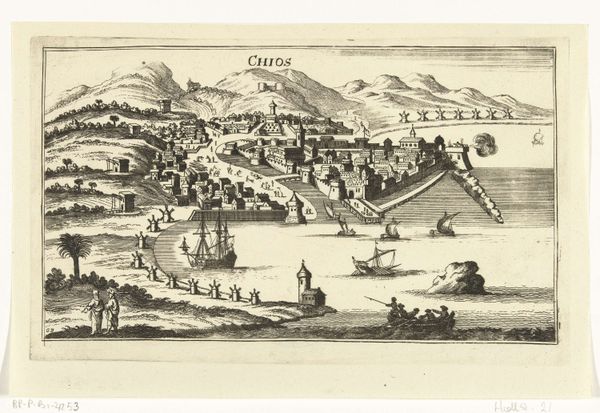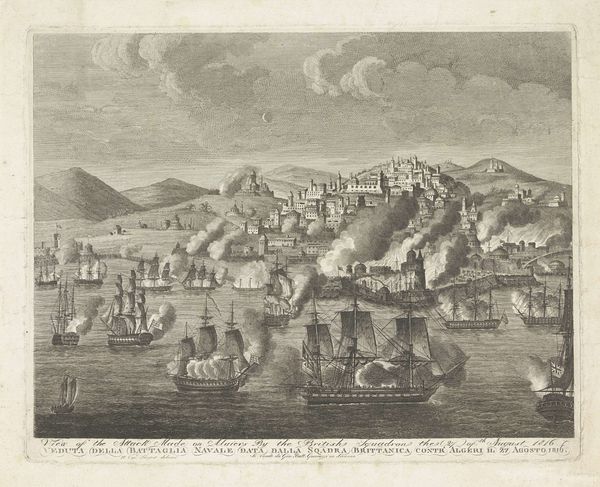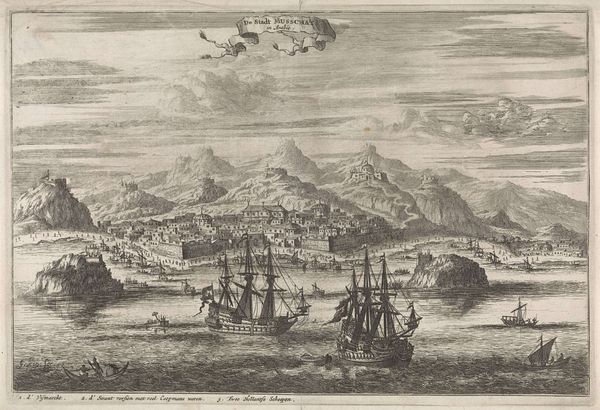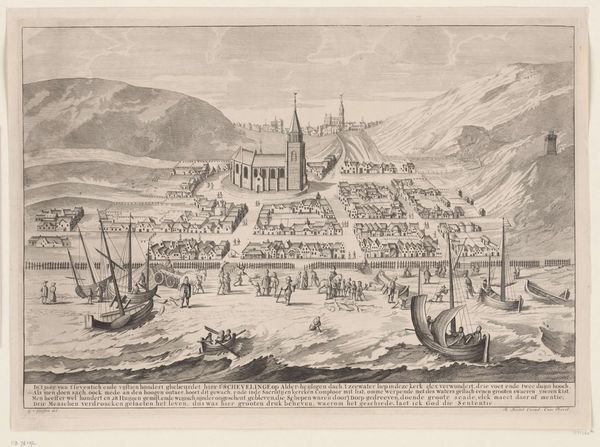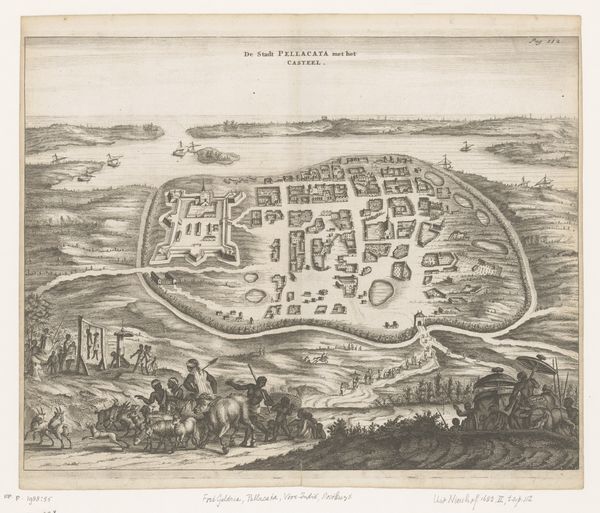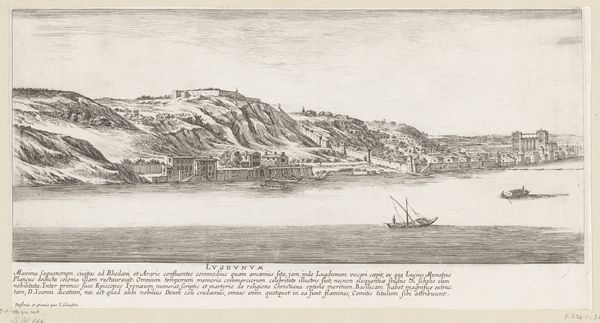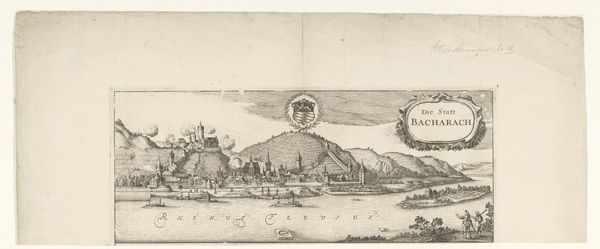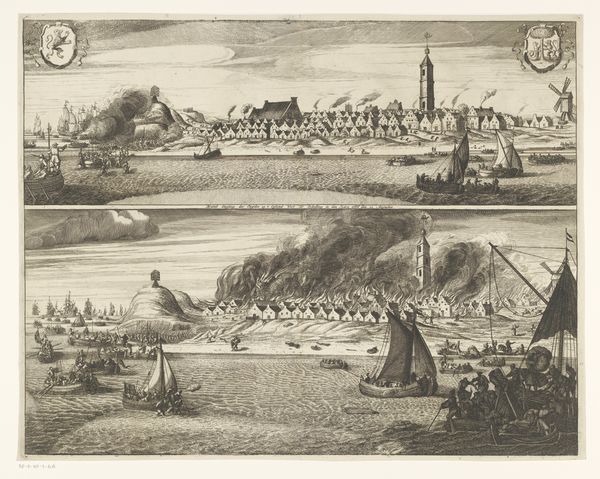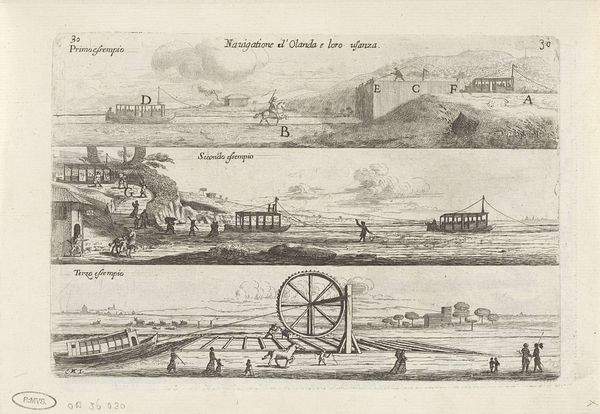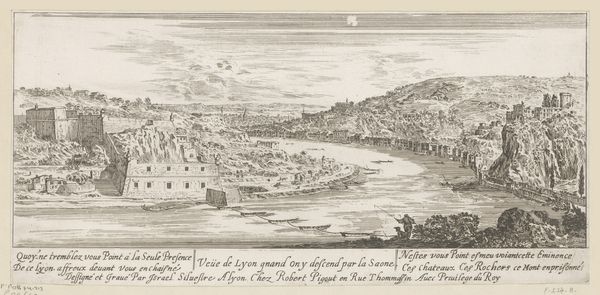
print, engraving
#
baroque
#
dutch-golden-age
# print
#
old engraving style
#
cityscape
#
engraving
Dimensions: height 296 mm, width 357 mm
Copyright: Rijks Museum: Open Domain
Curator: This bird's-eye view of Salvador, dating back to 1671, is an engraving currently held at the Rijksmuseum. It’s credited to an anonymous artist of the Dutch Golden Age. Editor: Immediately, the stark contrast and linear detail create a feeling of meticulous documentation. It's as if the artist aimed to capture every building, every ship, in a comprehensive inventory. Curator: And in that intent, consider the material—engraving allows for that precise reproduction, lending itself to dissemination. These prints weren’t simply aesthetic objects, they served to inform, to display colonial power and logistical ambition. Think of who consumed them, what those prints meant to burgeoning mercantile interests, and imagine the craftspeople creating the copies. Editor: Visually, though, the ships command attention. They aren’t just vessels; they are potent symbols of connection, of the exchange – or perhaps more accurately, extraction – between Europe and the Americas. Their size dwarfs the other elements of the image, emphasizing their importance. Curator: Precisely, and notice how the cityscape itself is neatly ordered, suggesting control, dominance even, over the landscape. Consider the labor required to impose that grid-like pattern, a testament to resource management. Editor: The fortified walls surrounding the city convey that protective structure, while also creating a division between the colonizers' architecture, and the land outside it. The imagery tells a tale of power. The city isn’t simply built. It’s constructed to make a point. Curator: So much of our understanding rests upon the physical making of this object. That metal plate, the repetitive action of engraving, its translation into these many printed copies, and what they communicated about Dutch mercantile activities in that time and place. Editor: True. For me it becomes a powerful icon of colonialism and the global shifts in power of that era, encoded in the artistic conventions of its time. Curator: Well, looking at it through your lens offers a potent counterpoint to how this artwork circulated, underlining the profound impact such images can exert through the years. Editor: Absolutely! It is a privilege to look deeply into historical context from aesthetic or material starting points.
Comments
No comments
Be the first to comment and join the conversation on the ultimate creative platform.
